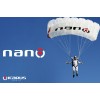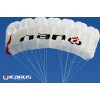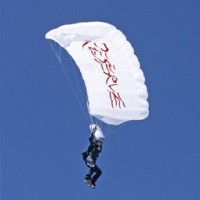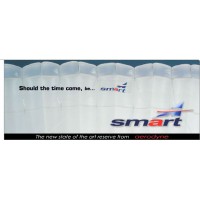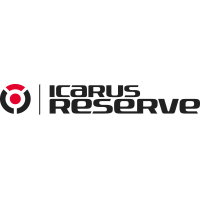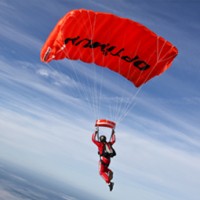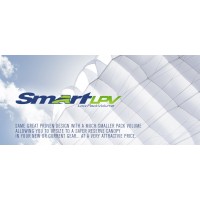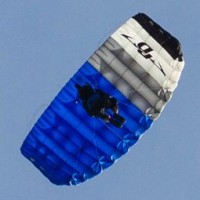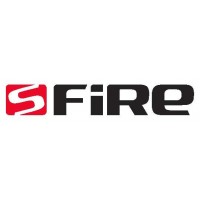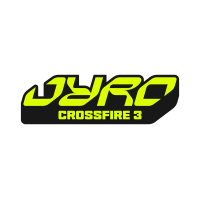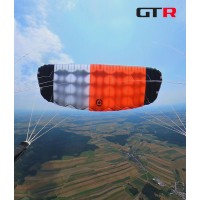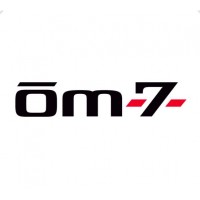BLACK FRIDAY DEAL 5% OFF WHEN PURCHASED AT THE SAME TIME AS AN ICARUS MAIN CANOPY - UNTIL DECEMBER 23rd 2024 - CONTACT US FOR CURRENT PRICING.
The ICARUS NANO NANO has revolutionized the low pack volume reserve. With the NANO you get the same low pack volume as its competitor with the added piece of mind that your NANO is made with a more dense low volume fabric that is more resistant to line friction and thereby a safer, more structurally superior last resort.
Even with a more dense fabric, we maintain 30% lower pack volume than our conventional reserve. We have tested the NANO above and beyond the specifications required by the FAA's TSO C23d. The NANO offers the same unparalleled opening, flight and landing characteristics as the ICARUS Reserve, now with a much lower pack volume. With high technology, low pack volume, and dependable durability, the NANO is the clear choice. We offer the NANO in sizes ranging from 99 to 253 square feet."
NANO Characteristics
| Model | Area (ft2) | Max Allowed Weight (lb) | Span (ft) | Chord (ft) | Aspect Ratio |
| NANO 99 | 99 | 131 | 14.3 | 6.8 | 2.1 |
| NANO 106 | 106 | 140 | 14.8 | 7.1 | 2.1 |
| NANO 113 | 113 | 150 | 15.3 | 7.3 | 2.1 |
| NANO 126 | 126 | 167 | 16.2 | 7.7 | 2.1 |
| NANO 143 | 143 | 189 | 17.2 | 8.2 | 2.1 |
| NANO 160 | 160 | 212 | 18.2 | 8.7 | 2.1 |
| NANO 176 | 176 | 233 | 19.1 | 9.1 | 2.1 |
| NANO 193 | 193 | 255 | 20.0 | 9.5 | 2.1 |
| NANO 218 | 218 | 255 | 21.3 | 10.1 | 2.1 |
| NANO 235 | 235 | 255 | 22.1 | 10.5 | 2.1 |
| NANO 253 | 253 | 255 | 22.9 | 10.9 | 2.1 |
20 DENIER FABRIC vs 30 DENIER FABRIC IN RESERVE PARACHUTES
The goal of manufacturers within the skydiving industry is to produce quality products that offer athletes the tools to progress, but also increase the safety of our sport. As the demand for smaller high performance canopies has increased, the size of containers have followed suit. Few companies have succeeded in manufacturing reserve canopies that pack small enough to allow skydivers to carry large reserves in small volume containers. We at ICARUS Canopies recognized the merit of this idea and devoted resources to find a solution of our own.
Before we looked for the ideal way to build such a reserve, we began researching low bulk products currently in the market. We discovered that thinner material with less energy absorbing capability was being used in place of the traditional reserve canopy fabric. Technically, the volume of the reserve was reduced because 30 denier fabric was replaced by 20 denier fabric. So what is a denier? In simple words: Weave Density. Parachute fabric is woven from nylon yarn. A single yarn consists of a thread made up of 10 parallel fibers. Denier is the weight expressed in grams for 9,000 meters of yarn. For example: 9,000 meters of 20 denier yarn weighs 20 grams; and 9,000 meters of 30 denier yarn weighs 30 grams. Bottom line: 30 denier fabric is actually 50% more material than 20 denier fabric.
Before thinking about the why denier matters, we need to understand why structural integrity is important specifically regarding reserve parachutes.
Using your reserve is never the result of an ideal situation, therefore it is important to prevent as many unforeseen outcomes as possible if it must be used. After a cut-away or direct deployment to reserve, a skydiver could be under unusual stress and possibly in a less than desirable pre-deployment attitude (ex. spinning, head down, back to earth etc). The reserve parachute deployment will be affected by such circumstances. Line twists, line overs and faster deployment speeds could all occur and would lead to additional friction between the suspension lines and the canopy fabric.
Generally, parachutes are over-designed for nominal conditions to ensure they meet all TSO requirements. Nevertheless, it has been proven time after time that nylon strength diminishes as temperature increases. Friction is detrimental to nylon and suspension lines can produce a great deal of it.
When equal loads of friction occur, 20 denier fabric will reach a high temperature faster than 30 denier fabric. This is due to the fact that 20 denier fabric consists of less material, therefore it heats up faster than 30 denier fabric. If this temperature reaches nylon melting point, structural damage called line burn occurs. This can make a huge difference in a canopys structural integrity after opening. 30 denier is more resistant to this kind of stress but it packs larger. This is a tough decision- pack volume or more friction resistant fabric? ICARUS wanted both.
ICARUS has put years of research into weave design into finding a way to have the best of both worlds. The new ICARUS NANO reserve is made of specially woven 30 denier fabric which packs just like 20 denier fabric. Working within the specifications defined under the standard PIA-C-44378-T4, with smaller than required tolerances, we have reduced the pack volume by 30% compared to our Standard Reserve.
This superior technology allows the ICARUS NANO to provide structural superiority and the lower pack volume that is being demanded by skydivers around the world. We are proud to present the first of its kind, the new durable low volume ICARUS NANO!
Please Contact Us if you require further information.

 Categories
Categories








 Manufacturers
Manufacturers Reviews
Reviews Blog
Blog Contact
Contact +44 (0)1295 812101
+44 (0)1295 812101

